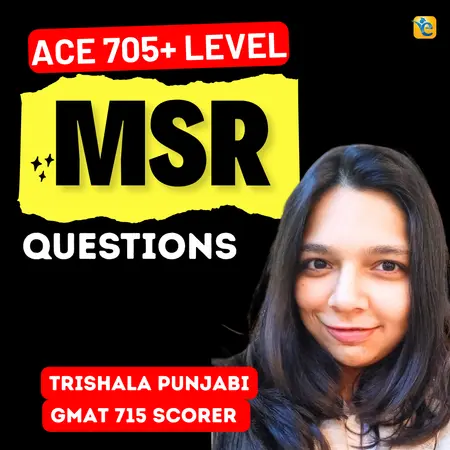Events & Promotions
|
|

GMAT Club Daily Prep
Thank you for using the timer - this advanced tool can estimate your performance and suggest more practice questions. We have subscribed you to Daily Prep Questions via email.
Customized
for You
Track
Your Progress
Practice
Pays
Not interested in getting valuable practice questions and articles delivered to your email? No problem, unsubscribe here.
- Nov 19
09:00 AM PST
-10:00 AM PST
What’s in it for you- Live Profile Evaluation Chat Session with Jenifer Turtschnow, CEO ARINGO. Come with your details prepared and ARINGO will share insights! Pre-MBA Role/Industry, YOE, Exam Score, C/GPA, ECs Post-MBA Role/ Industry & School List. - Nov 19
10:00 AM EST
-01:00 PM EST
Get expert MBA strategy, instant essay feedback, and personalized advice on your entire application. Join My Admit Coach, the AI-powered MBA admissions platform built on 10K+ successful application docs for HBS, Stanford GSB, MIT and other top programs. - Nov 19
11:00 AM PST
-12:00 PM PST
Round 2 is here — and it’s your chance to make your MBA dream happen! Join GMAT Club’s LIVE discussion with two top experts from The Red Pen, Gunjan Jhunjhunwala and Natasha Mankikar, as we break down everything you need to know - Nov 12
01:00 PM EST
-11:59 PM EST
Get expert MBA strategy, instant essay feedback, and personalized advice on your entire application. Join My Admit Coach, the AI-powered MBA admissions platform built on 10K+ successful application docs for HBS, Stanford GSB, MIT and other top programs. - Nov 18
11:00 AM PST
-12:00 PM PST
Join us in a live GMAT practice session and solve 30 challenging GMAT questions with other test takers in timed conditions, covering GMAT Quant, Data Sufficiency, Data Insights, Reading Comprehension, and Critical Reasoning questions. - Nov 20
10:00 AM EST
-10:30 AM EST
If you’re applying to Columbia, NYU Stern, or Yale SOM, you need more than strong stats. Each school defines “leadership” differently, and your essays must reflect that. Join Sia Admissions founder, Susan Berishaj on November 20th - Nov 20
09:00 PM IST
-10:00 PM IST
Join our free expert-led Essay Workshops to discover how to choose impactful stories, highlight your core values, and align your background with each school’s distinct culture, making every word truly count. - Nov 21
08:30 AM EST
-09:15 AM EST
Get the inside scoop on what makes Emory’s Goizueta Business School great, learn how you can present a strong MBA application, and connect with an Admissions Director to get your questions answered. - Nov 21
09:30 PM IST
-10:30 PM IST
Learn how to craft powerful, authentic essays by mastering the 3 “WHYs” every top MBA program looks for: Why MBA, Why Now, and Why This School. - Nov 24
08:00 PM PST
-09:00 PM PST
Inquire for a free profile evaluation and guarantee statement for possible admits and scholarships!
variantguy
Joined: 03 Feb 2019
Last visit: 13 Aug 2022
Posts: 288
Given Kudos: 250
Location: India
Concentration: Technology, Entrepreneurship
Schools: Haas '23 (M$) Ross '23 (A$) Anderson '22 (A$)
GMAT 1: 750 Q49 V42

WE:Marketing (Computer Software)
Kudos
Bookmarks
You have your GMAT score. You have your post-MBA goals figured out. Your resume is beginning to take shape, and you have a fair sense of your best professional and personal stories. But, now you are wondering which schools should you apply to.
School selection is both an art and science. It's a delicate balance between ambition and pragmatism, and when done correctly, should lead you to the best possible school that you could have gotten into. It's no surprise then that most applicants often end up on either side of this balancing act: either overestimating their chances and facing the dreaded "all dings" scenario or underestimating their chances, getting several admits, but ending up wondering, "could I have gotten into a better/higher-ranked program."
So, coming back to you - you who is now wondering what the best possible combination of "Stretch, Fit, Safety" that you should go after is. This post will help you answer some of the questions in your mind right now, such as:
And similar other questions, which I, as an applicant, also struggled with finding answers to. I have crunched some numbers and from those, found some insights that I feel will provide a helpful starting point as you figure out your school list.
Table of Contents
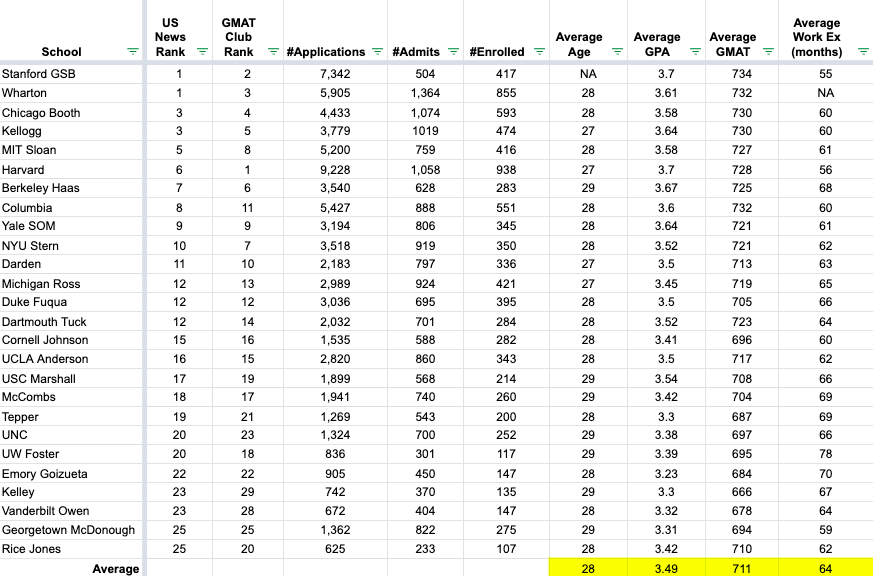
Screenshot 2020-12-30 at 3.12.37 PM.png [ 130.35 KiB | Viewed 31827 times ]

Screenshot 2020-12-30 at 7.01.58 PM.png [ 60.25 KiB | Viewed 31329 times ]
Key Takeaways
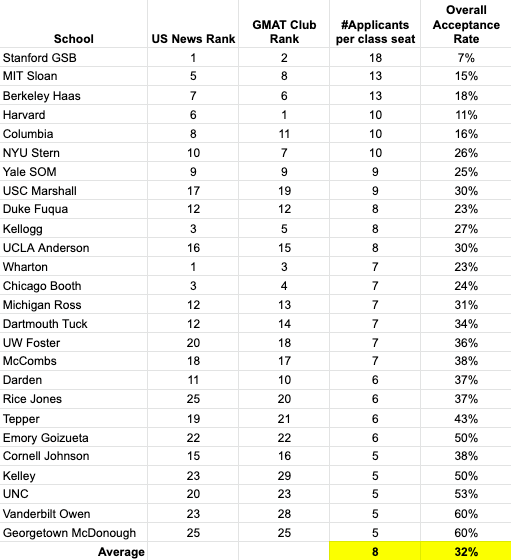
Screenshot 2020-12-30 at 6.59.47 PM.png [ 74.19 KiB | Viewed 30610 times ]

Screenshot 2020-12-30 at 9.13.41 PM.png [ 58.98 KiB | Viewed 30274 times ]
Key Takeaways
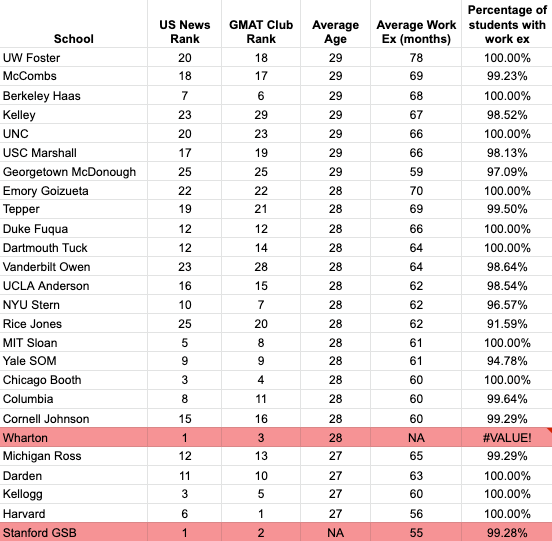
Screenshot 2020-12-30 at 6.06.52 PM.png [ 91.18 KiB | Viewed 29956 times ]
Key Takeaways
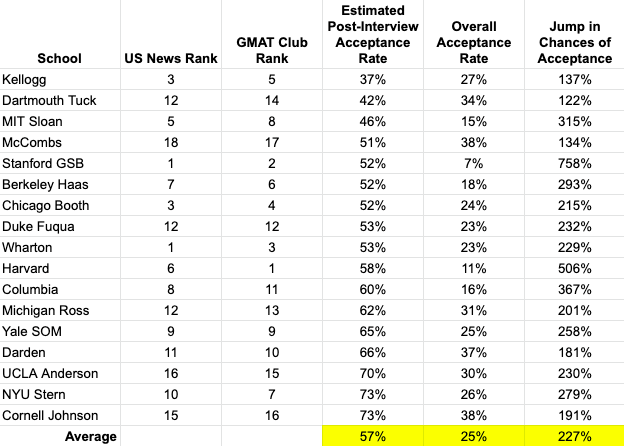
Screenshot 2020-12-30 at 5.43.44 PM.png [ 77.7 KiB | Viewed 29511 times ]
For the "art" part (which, in my opinion, creates the difference between a good application-expected result and a great application-stellar result) you need to go out and talk to current students and alumni. These conversations can help you in two major ways - they can help you identify school resources and strengths that cater specifically to your career goals and aspirations (and hence lead to a shuffle in your initial list), and help you assess your fit with the school's community and culture (again, leading you to rethink your chances at School A vs. a peer School B).
Good luck with your application journey!
Have suggestions on how to improve this post? Feel free to share your thoughts.
School selection is both an art and science. It's a delicate balance between ambition and pragmatism, and when done correctly, should lead you to the best possible school that you could have gotten into. It's no surprise then that most applicants often end up on either side of this balancing act: either overestimating their chances and facing the dreaded "all dings" scenario or underestimating their chances, getting several admits, but ending up wondering, "could I have gotten into a better/higher-ranked program."
So, coming back to you - you who is now wondering what the best possible combination of "Stretch, Fit, Safety" that you should go after is. This post will help you answer some of the questions in your mind right now, such as:
- What do the average GMAT, GPA, and work experience numbers look like at the T25 schools?
- What are the typical overall acceptance rates at the T25 schools?
- How do the M7s rank in order of ease of getting in? Likewise, which are the least selective T10/T15/T25 programs?
- Which T25 programs favor international applicants more than others?
- As an older/more experienced candidate, how do I figure out which T25 programs favor candidates like me?
- Conversely, as a young candidate with no/little work experience, how do I figure out which T25 programs favor candidates like me?
- (If you're good at interviews) Which schools have the highest interview invite and post-interview conversion rates?
- (If you're not-so-good at interviews) Better start improving your interviewing skills!
And similar other questions, which I, as an applicant, also struggled with finding answers to. I have crunched some numbers and from those, found some insights that I feel will provide a helpful starting point as you figure out your school list.
Table of Contents
- US News Top 25 Schools' Applicant and Class Profiles
- Top 25 Schools Ranked by Overall Acceptance Rates
- Top 25 Schools Ranked by Overall Competition for Admission
- Top 25 Schools Ranked by Receptivity to Internationals
- Top 25 Schools Ranked by Receptivity to Older+High Work Ex. Applicants
- Top 25 Schools Ranked by Receptivity to Applicants with no work experience
- Top 25 Schools Ranked by Chances of Getting an Interview
- Top 25 Schools Ranked by Post-Interview Conversion Rates
US News Top 25 Schools' Applicant and Class Profiles
Attachment:
Screenshot 2020-12-30 at 3.12.37 PM.png [ 130.35 KiB | Viewed 31827 times ]
Top 25 Schools Ranked by Overall Acceptance Rates
Key Takeaways- #1: On average, 1 in 3 applicants to the T25 schools receive an admission offer.
- #2: Stanford GSB, Harvard, MIT Sloan, Columbia, and Berkeley Haas are the five most selective schools amongst the Top 25 schools. (Does this surprise anyone?)
- #3: Fuqua is the most selective 'non T10' school, and in fact is the sixth most selective school overall. (Does THIS surprise anyone?)
- #4: Kellogg is the least selective amongst all M7 schools, and is not even in the 10 most selective schools amongst the top 25.
- #5: Amongst the T15 schools, Cornell, Darden, Tuck are the least selective, followed by Ross and NYU Stern. (An example of how you could use this insight: You'd be statistically better off applying to Darden, Tuck, Ross, and Stern - all of which are considered peer schools to Fuqua.
 )
)
Attachment:
Screenshot 2020-12-30 at 7.01.58 PM.png [ 60.25 KiB | Viewed 31329 times ]
Top 25 Schools Ranked by Overall Competition for Admission
I feel that while the acceptance rate of a school defines its 'selectivity,' the # of applicants vying for each seat at the school define its 'desirability.' As an applicant, you should look at both the factors when trying to assess the relative competition you'll face at each school. In the below table, I have arranged the schools first by the #applicants per class seat followed by their acceptance rates.Key Takeaways
- #1: On average, there are 8 applicants for every seat at the Top 25 schools. Stanford GSB had as many as 18 applicants for each of its Class of 2021 seats! Cornell, Kelley, UNC, Vanderbilt, and Georgetown had the lowest competition for each of their available seats - five applicants per seat.
- #2: MIT Sloan and Berkeley Haas had more applicants per seat (13) than Harvard(10)! The relatively smaller class sizes of the former two programs compared to Harvard could be a factor that leads to more competition overall.
- #3: USC Marshall is the 'non T10' school with the highest number of applicants per seat (9), followed by Fuqua (8).
- #4: Based on #applicants per seat and overall acceptance rates taken together, Booth, Wharton, and Kellogg are the three easiest M7 programs to get into. (Though there's nothing objectively easy about getting into any of these programs
 )
) - #5: Based on the same parameter as above, Cornell, Darden, and Tuck are the three easiest T15 programs to get into. (Same disclaimer as above)
Attachment:
Screenshot 2020-12-30 at 6.59.47 PM.png [ 74.19 KiB | Viewed 30610 times ]
Top 25 Schools Ranked by Receptivity to Internationals
Caution: While reading this and the following tables about school selectivity around demographic factors, the best way to use the data would be to compare 2(or more) peer schools to see where you'd have the best shot at an admit. For example, while CBS admits ~3x more internationals than Vanderbilt Owen, that doesn't mean that you automatically have 3x chances at CBS and hence should apply there. Instead, a fair assessment would be to compare CBS and Haas, where CBS admits significantly higher internationals and hence gives a statistically better shot to an international applicant.Attachment:
Screenshot 2020-12-30 at 9.13.41 PM.png [ 58.98 KiB | Viewed 30274 times ]
Top 25 Schools Ranked by Receptivity to Older+High Work Exp. Applicants
In the table below, I've sorted the schools based on average age, followed by average months of work experience, followed by the percentage of school's class with work experience.Key Takeaways
- #1: There seems to be some truth to the adage that if you're on the wrong side of 30, getting into business school could be more challenging for you than the average Joe and Jane. However, being one of those applicants and experiencing a decent level of success myself, I can say that you should look at these numbers not as a deterrent but just to get an idea of the cohort professionally. (Plus, the median numbers will paint a more reassuring picture
 ).
). - #2: Nine of the T10 schools fall in the bottom half of the table (I didn't get complete data for Stanford and Wharton but one can make a reasonable estimate from their other numbers), indicating that the T10 schools favor younger applicants more than the rest of the T25.
- #3: Berkeley Haas comes out as the highest-ranked program that also seems to be the most recipient to older/more experienced applicants.(I can personally vouch for that
 )
)
Attachment:
Screenshot 2020-12-30 at 6.06.52 PM.png [ 91.18 KiB | Viewed 29956 times ]
Top 25 Schools Ranked by Receptivity to Applicants With No Work Exp.
No work experience? No problem! It's not the end of the road for you, though things do look way more challenging if you don't have any professional accomplishments to talk about.Key Takeaways
- #1: Only 14 of the T25 schools have at least 1 student with no work experience in the Class of 2021.
- #2: Yale SOM and NYU Stern are the only two T10 programs with a sizeable number of students without work experience.Attachment:
Screenshot 2020-12-30 at 6.24.52 PM.png [ 56.07 KiB | Viewed 29800 times ]
Schools Ranked by Chances of Getting an Interview Invite
Below I've ranked the schools based on their estimated interview invitation rates. To calculate this metric, I've used the #admits shared by the schools and the estimate of post-interview conversion rates created by @Narenn. Note: I was able to get the data for only 17 of the 26 schools, but will try to add the data for the remaining schools as well.
Key Takeaway- #1: Tuck and Kellogg (along with McCombs) have the highest interview invite rates. However, neither of these two schools "interview everyone who applies," contrary to a very popular MBA admission myth.
Attachment:
Screenshot 2020-12-30 at 5.29.46 PM.png [ 54.29 KiB | Viewed 29621 times ]
Schools Ranked by Post-Interview Conversion Rates
Received an interview invite from your dream school? Congratulations! Your chances of acceptance increase dramatically. How dramatically? That varies from school to school, as shown below.
Key Takeaways- #1: On average, your chances of acceptance jump by a little more than two times once you've interviewed, from 1 in 4 to better than a coin-flip.
- #2: Interviewed at Stanford GSB or HBS? You've increased your chances of acceptance to the two best business schools in the world by 7.5x and 5x, respectively, from when you started the application!
- #3: As one would expect, Kellogg and Tuck have the lowest post-interview acceptance rates, followed by MIT Sloan.
Attachment:
Screenshot 2020-12-30 at 5.43.44 PM.png [ 77.7 KiB | Viewed 29511 times ]
Epilogue
I hope this data, along with the WAMC tool, helps you figure out the "science" part of school selection, which broadly helps you understand your competitiveness at these programs.For the "art" part (which, in my opinion, creates the difference between a good application-expected result and a great application-stellar result) you need to go out and talk to current students and alumni. These conversations can help you in two major ways - they can help you identify school resources and strengths that cater specifically to your career goals and aspirations (and hence lead to a shuffle in your initial list), and help you assess your fit with the school's community and culture (again, leading you to rethink your chances at School A vs. a peer School B).
Good luck with your application journey!
Have suggestions on how to improve this post? Feel free to share your thoughts.
Kudos
Bookmarks
Wow! This is really amazing research and super helpful for anyone applying in R2 or in later seasons. 👍👍👍
Posted from my mobile device
Posted from my mobile device
Kudos
Bookmarks
Can you post the source excel?













